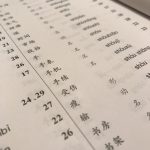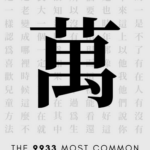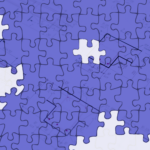Articles in the ‘Advanced’ category Page 10
-
Vocabulary lists that help you learn Chinese and how to use them
Learning new characters and words from a list is rarely a good idea, but there are exceptions! Let’s have a look at five types of vocabulary lists how to use them to learn Chinese.
Read → -
Should you learn Chinese vocabulary from lists?
Students often rely on lists to learn new Chinese characters and words. This can be useful in some situations, but there are also many problems with this approach.
Read → -
6 benefits of learning Chinese through sports
The general benefits of physical activity are well-known, but the more specific benefits for learning languages are often overlooked, so let’s have a look at 6 benefits of learning Chinese through sports!
Read → -
Should you use an efficient method for learning Chinese even if you hate it?
Methods for learning Chinese can be good because they are efficient, because they to focus on the right content, or because they are enjoyable, allowing you to spend more time. But no method is good in all these ways at once, so what should you do if you just don’t like the most efficient method?
Read → -
Don’t try to improve everything at once when learning Chinese
To communicate in Chinese, many skills need to work in unison, but trying to improve all of them at once is a recipe for frustration. Instead, limit your focus to make progress and stay motivated!
Read → -
Can ChatGPT pass the HSK?
ChatGPT has been all over the news for its remarkable ability to interact in a human-like manner, understand questions and respond in a meaningful way. It has even been used to pass university exams. But how good is it at Chinese? Can it pass the HSK?
Read → -
Using the HSK as a roadmap to learning Chinese
For some students, the HSK is not just a proficiency test, but also a roadmap to learning Chinese. Is treating it as such a good idea? And if you do, what should you keep in mind?
Read → -
Learn Chinese efficiently, not quickly
Learning Chinese efficiently is a better goal for most people than learning Chinese quickly.
Read → -
Beyond tīng bu dǒng, part 4: Learning to process spoken Mandarin quickly and effortlessly
Our ability to consciously process spoken Mandarin is limited; the only way forward is to listen so much that processing becomes automated.
Read → -
Beyond tīng bu dǒng, part 3: Using what you already know to aid listening comprehension in Chinese
Listening comprehension is not only about extracting information from the spoken Mandarin you hear, it’s also about applying what you already know and expect.
Read →









